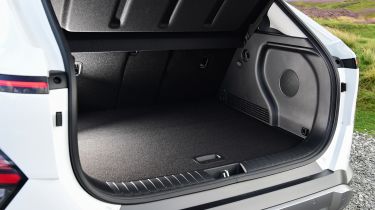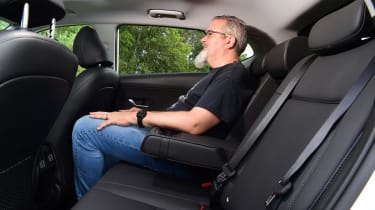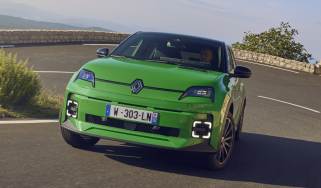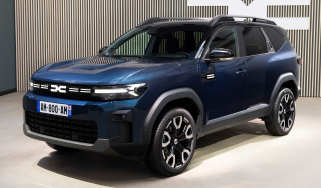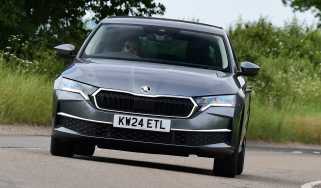Hyundai Kona - Practicality, comfort and boot space
The second-gen Hyundai Kona has grown, finally making it practical enough to be considered as a family car

The original Hyundai Kona was not the most practical of small SUVs, but Hyundai listened to feedback from owners who requested more cabin space and a larger load bay. As a result, the second-generation model is significantly larger than its predecessor, having a longer wheelbase and considerably more space inside for luggage and passengers alike.
Charging everyone’s devices should be a doddle, because there are two USB-C ports in the rear, another two up front along with a 12V socket, with some models also featuring a wireless charging pad. We also like that there’s plenty of storage spaces dotted around the cabin, although we wish a couple more were covered in some way to help keep valuables out of sight.
Size
The Kona has grown in size for its second generation. The original Kona measured 4,205mm long, 1,800mm wide (2,070mm including door mirrors) and up to 1,568mm tall, while the Mk2 Kona is 4,350mm long, 1,825mm wide (2,100mm including door mirrors) and 1,585mm tall. The Kona’s wheelbase has also been stretched from 2,600mm to 2,660mm on the new model.
Leg room, head room & passenger space
The previous Kona offered about as much space inside as a supermini, but the new car’s cabin is far more spacious, offering ample room for five people. In fact, we found that the Kona now offers about the same knee and headroom as its bigger brother, the Hyundai Tucson mid-size SUV. The Tucson’s cabin is a little wider, which makes it better for carrying three adults in the rear, but otherwise there’s not much separating the two.
More reviews
Car group tests
- Honda e:Ny1 vs Hyundai Kona Electric 2024 twin test: an electric SUV duel
- Hyundai Kona vs Honda HR-V: hybrid SUVs battle for supremacy
- Old car vs new car: Rover 200 vs Hyundai Kona
In-depth reviews
Long-term tests
Road tests
Two ISOFIX child seat mounting points are provided on the outer positions of the 2nd row seats.
Boot
There’s a whopping 466 litres of boot space available in the Hyundai Kona, which is even bigger than the already generous Skoda Kamiq, and puts the Kona on par with the very best in the small SUV class, with up to 1,300 litres of space available when the rear seats are folded down. Those rear seats fold in a highly versatile 40/20/40 split, which is something rarely found in the small SUV class and, even then, is generally the preserve of expensive premium brands.
While the latest Kona doesn’t feature a handy sliding rear bench seat like the Renault Captur to trade rear leg room for a bigger boot, nor the nifty underfloor storage box in the Ford Puma that can be easily washed out if you happen to put muddy hiking boots in it, the Kona has sheer size on its side.
Towing
The entry-level 118bhp petrol Kona has a maximum towing capacity of 1,200kg, but the 196bhp petrol and Kona Hybrid models can both haul up to 1,300kg. Neither figure is headline-grabbing, so if maximum towing capacity is what you’re after, consider a four-wheel drive ‘4Motion’ VW T-Roc. That can tow up to 1700kg in both 2.0-litre petrol and diesel forms.
The Kona Electric is even less capable, with only 300-750kg towing capacity, depending on the model.
